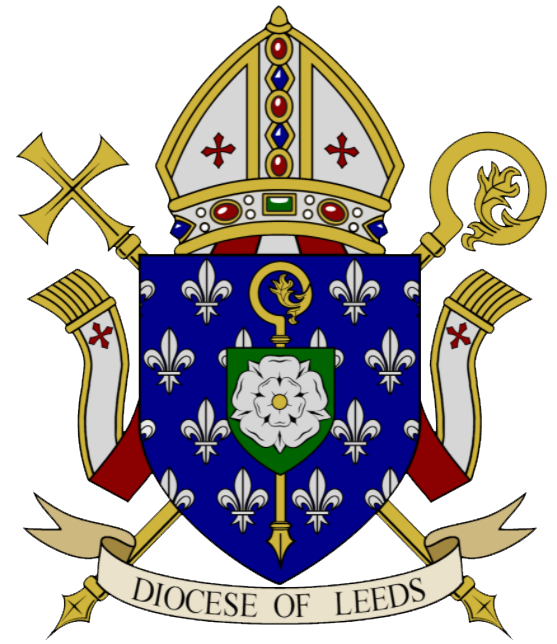
A red brick Gothic Revival church of 1895, serving a poor area. Architecturally the least ambitious of three churches in the diocese by John Kelly, the finest individual feature being the great west window.
The establishment of the mission was indirectly the result of the building of Armley gaol in 1847. Fr Denis Collins from St Anne’s Cathedral was Catholic chaplain there and in the 1860s was saying Mass for the people of New Wortley (at an unknown location). The mission was established in 1868 and Fr Collins was appointed the first resident priest, with Mass said in his house at 47 Holdforth Street. He soon acquired a site along Green Lane between Nicholson Street and Copley Street where in 1871 the first Holy Family school was opened. The school chapel, seating about 120, was used for Mass, but as it served the growing Catholic population of Armley, Wortley, Bramley and parts of Holbeck and Beeston, it soon became inadequate; by the 1890s this population had grown to about 800. The foundation stone of a new church designed by John Kelly (architect of St Patrick’s, Leeds) was laid by Bishop Gordon on 17 June 1894 and the completed church was opened on 5 August 1895. The cost was £3,100 and the church seated 450. It was consecrated by Bishop Cowgill on 26 May 1923. In the late 1950s a new entrance porch was added at the west end.
Description
The church is orientated north-south but this description follows conventional liturgical orientation.
A Gothic Revival church of 1894-5 by John Kelly of Leeds, one of three churches he built in the diocese. Red brick laid in English garden wall bond (3:1), stone dressings and Welsh slate roof. The church consists of nave, aisles, apsidal sanctuary with flanking chapels, and a later western porch or narthex. On the south side there is a transept-like sacristy extension giving off the aisle. There is no tower.
The main entrance west front has an asymmetrically-placed red brick porch or narthex, added in the 1950s, with lancet windows and a lean-to slate roof. Behind this, the gabled west front is dominated by a large west window of six lights with curvilinear tracery. Simple Gothic arched doorway in the west wall of the north aisle. On the side elevations the aisles are windowless, although on the north side at least the wall face is articulated by blind Gothic arcading. Above this, square-headed and paired clerestorey lights with cusped tracery. The canted apse to the sanctuary, like the aisle walls, is blind, with the wall surface articulated by blind brick arcading.
The interior is lofty and wide. Four nave arcades supported in circular piers with moulded capitals, bases and arches, the latter with hoodmoulds terminating in plain block corbels. String course and clerestorey over, the glass throughout mottled with a blue border. Above the clerestory, a timber wagon roof with the principals carried down as plain wall shafts. Lean to-timber roofs to the aisles. The division between nave and sanctuary is marked by triple colonettes carrying cusped principals. Three blind arcades to the apsidal sanctuary, with carved wooden screens (possibly original) separating this space from the flanking chapels. The original high altar is said to have been of Dutch design and was presented by Fr Hassing. It does not survive, but its statues of the Holy Family, St Francis and St Anthony survive mounted on the wall at the back of the church. The present sanctuary furnishings are of oak, including rails which have more the character of cancellae. The Sacred Heart altar was originally on the south side, in front of the organ, but was moved to the north side, and a marble altar installed, at the time of the consecration in 1923. At the same time the timber Gothic Lady altar was installed in front of the organ in the south chapel. There is now a projecting dais and timber forward altar in front of the original steps up to the sanctuary. The nave seating consists of plain pine pews. There are some good original painted and framed Stations of the Cross, of Flemish character.
Parish of Christ the King and Holy Family
The Presbytery
Kings Approach
Leeds LS13 2DX

2024 © Designed by Dales Creative Web Design